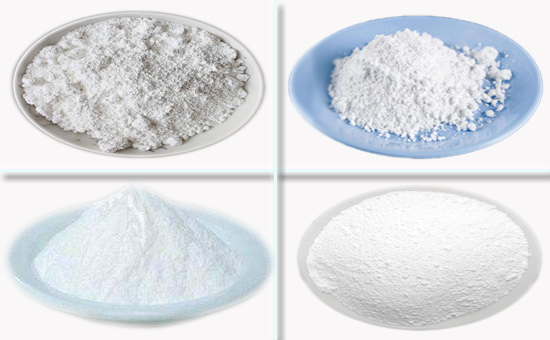
The rubber product filler has good compatibility with the rubber raw material, and can be filled in large amounts in the rubber to reduce the production cost of the product. Rubber fillers have reinforcing fillers and non-reinforced fillers. Different types of fillers have different colors. Four white fillers are commonly used in the production of butyl regenerated rubber products to improve the performance of butyl regenerated rubber products.
1. White carbon black: White carbon black is a reinforcing filler. It can improve the tensile strength, hardness, and other physical and mechanical properties of butyl regenerated rubber products, just like the reinforcing effect of carbon black. Silica also has strong adhesion, tear resistance, and heat and aging resistance. It improves the adhesive strength, tear strength, and heat resistance of butyl regenerated rubber products while "reinforcement" and prolongs. Butyl recycled rubber use time.
2, talc: talc is a white, odorless, soft and shiny white powder, is a non-reinforcing filler, easy to disperse in butyl reclaimed rubber, can increase the dimensional stability of butyl reclaimed rubber products , Tensile strength, shear strength, flexural strength, pressure strength, reduce the permanent deformation rate, elongation rate of butyl reclaimed rubber products; talc powder has different shapes, such as rod, granular, flake, which can significantly flaky talcum powder Improve the tensile strength and tensile stress of butyl reclaimed rubber products and enhance the reinforcing effect.
3, calcium carbonate: calcium carbonate is very common white non-reinforcing filler, many varieties, for the production of butyl reclaimed rubber products are usually light calcium carbonate. The light carbonic acid carbonate is low in price, non-toxic, odorless and non-irritant. Filling the butyl reclaimed rubber product can increase the product volume, reduce the production cost, and can also reduce the elongation and elasticity in the production process of the butyl regenerated rubber product. The loss increases the tensile strength, abrasion resistance and tear strength of butyl regenerated rubber products.
4, clay: clay is kaolin, clay, etc., is the rubber industry's largest silicate filler, is a reinforcing filler. Pottery clay has better reinforcing effect in butyl regenerated rubber than calcium carbonate. It can increase the tensile strength and tensile stress of butyl reclaimed rubber compound. It can also improve the processing performance of butyl regenerated rubber products and improve the surface smoothness of products. Degree, viscosity, stiffness, reduce the shrinkage of butyl reclaimed rubber compound.
White carbon black, talcum powder, calcium carbonate and clay are the four most common fillers in the production of butyl regenerated rubber products, which can reduce the production cost of butyl regenerated rubber products, improve the processing technology of reclaimed rubber compounds and butyl reclaimed rubber products. Performance, but still need to pay attention to some problems in the process of use: For example, if the amount of these white fillers is too large, black reclaimed rubber products will be played, and too large white filler particles will affect the tear strength of butyl regenerated rubber compounds. , Wear resistance and resistance to flexion, too much amount of clay will delay the vulcanization of the rubber, so the need for product selection and dosage needs to be very cautious.
Exclusive original article [commercial authorization] reprint, excerpt and excerpt in any form are prohibited without written authorization. Focus on Hongyun rubber: learn the process formula and raw material technology of producing rubber products from recycled rubber to help you reduce costs and increase profits